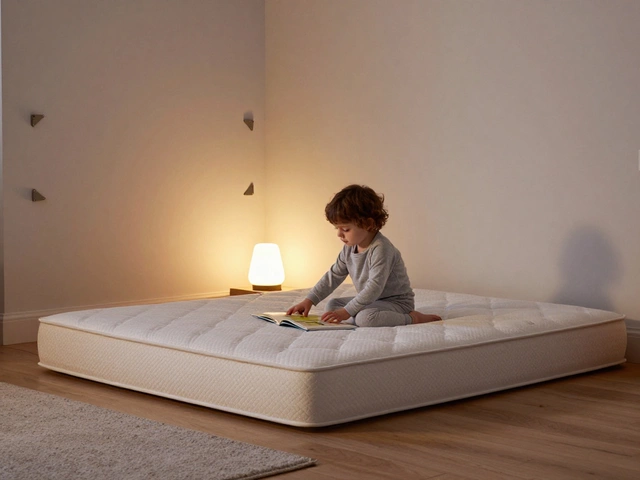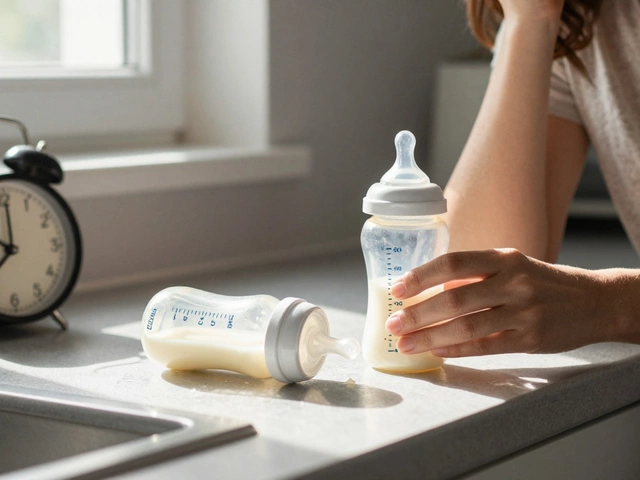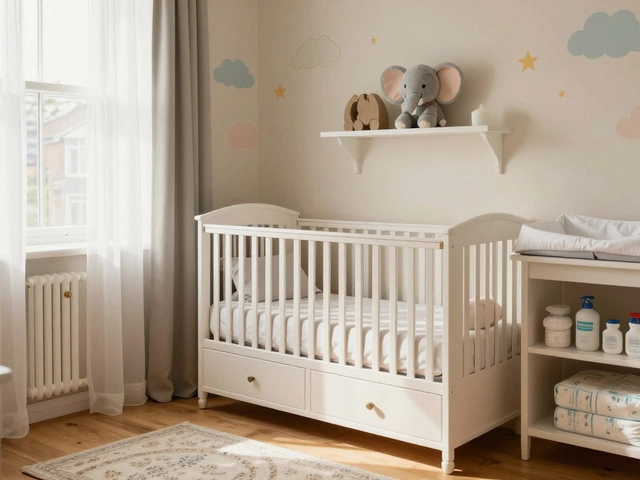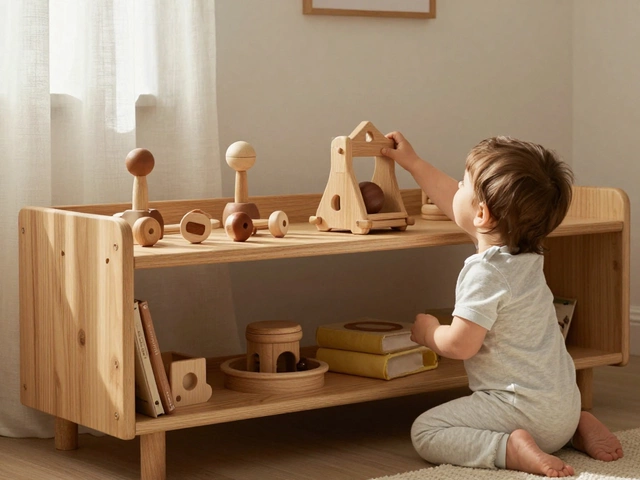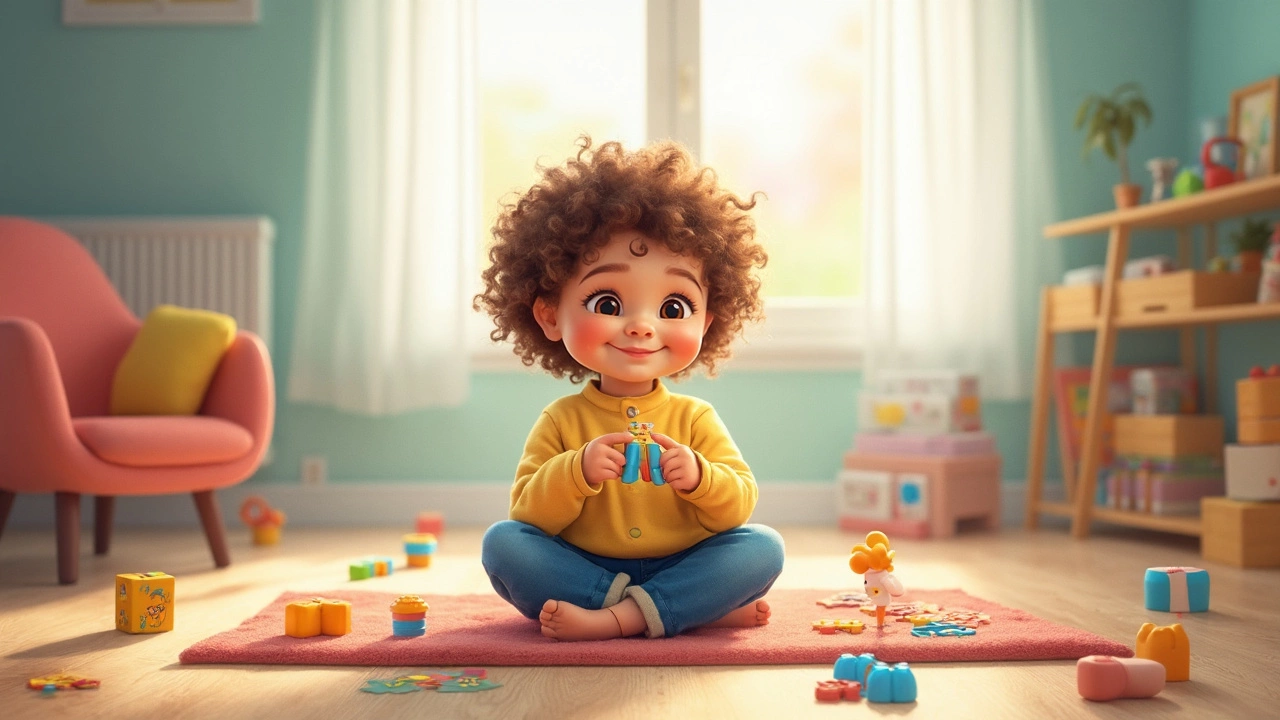
Kids with ADHD often have energy that just doesn’t quit. Sitting still and concentrating? That can be a tough ask. But the right toys do more than pass the time—they actually help channel that energy into something helpful. I’m talking about toys that give restless hands something to do, spark curiosity, and offer instant feedback. The trick is knowing which ones actually help, instead of those that just end up in a toy box graveyard.
Think about this: a 2023 survey from the National Resource Center on ADHD found that over half of parents saw a real improvement in focus when their kids used certain educational toys regularly. That’s more than just hype. It means picking the right toys might make home life a bit smoother—and help your child feel a little more in control.
- Why Toy Choice Matters with ADHD
- Top Categories: Fidget, Sensory, and STEM
- Movement-Based Toys: Letting Off Steam
- Puzzles and Building Kits for Focus
- Role-Play and Storytelling Games
- Tips for Picking the Right Toy
Why Toy Choice Matters with ADHD
Choosing toys isn’t just about fun for kids with ADHD—it’s about helping them cope, learn, and thrive. The way a child with ADHD interacts with the world looks different, so the toys they use should fit those unique needs. For example, a good ADHD toy can calm an anxious mind, support self-control, or give an energy outlet without causing distractions.
Kids with ADHD are wired to seek new stimulation. This means they often get bored with regular toys faster than other kids. When a toy provides the right kind of challenge or movement, it doesn’t just keep them occupied—it helps them practice important skills like patience, teamwork, or problem-solving. In fact, therapists often use sensory toys and fidgets in sessions to help kids stay present and less overwhelmed.
Here’s what the right toy can actually do for a child with ADHD:
- Help manage impulse control by offering a safe way to fidget or move.
- Direct restless energy into something creative or constructive, like building blocks or art supplies.
- Teach cause and effect through immediate feedback—think puzzles, pop-its, or toys that respond to actions.
- Boost confidence by letting kids experience small wins, instead of constant frustration from toys that are too hard or not engaging enough.
It’s not just about any toy—it’s about picking one that matches the way your child learns and plays. If a toy is overwhelming, it ends up unused. If it’s too simple, boredom kicks in fast. That’s why you need toys that are just right: engaging, hands-on, and adaptable as your kid’s needs change.
Top Categories: Fidget, Sensory, and STEM
If you’re hunting for toys that actually help kids with ADHD, you want to start with three main groups: fidget, sensory, and STEM. Each has a real job to do, and some toys can even fit in more than one group.
ADHD toys need to do more than just entertain. Fidget toys, for example, keep little hands busy, which frees up brain space for listening or learning. Sensory toys play with texture, sound, or movement, helping calm nerves or boost alertness. STEM options (science, tech, engineering, math) draw kids in and help them focus for longer stretches.
- Fidget Toys: Things like stress balls, fidget cubes, and twisty tangles are big winners. Teachers in a 2022 ADHD Foundation study handed out fidget tools in class and 70% noticed better attention and less fidgeting in their students.
- Sensory Toys: These tap into touch, sound, or sight for instant feedback. Think squishy putty, weighted lap pads, pop tubes, or textured mats. OT Magazine found that sensory toys helped 67% of kids with ADHD manage overstimulation at home and school.
- STEM Toys: Building sets, coding robots, and electronic circuits come with step-by-step challenges. It’s not just fun—these can actually stretch attention spans and boost confidence in problem solving.
Check out some quick stats to compare these categories:
| Toy Type | Reported Attention Improvement* | Calming Effects* |
|---|---|---|
| Fidget | 70% | 55% |
| Sensory | 62% | 67% |
| STEM | 58% | 41% |
*Based on 2023-2024 surveys from ADHD Foundation and OT Magazine
The bottom line? Fidgets help channel extra energy. Sensory toys can soothe or energize depending on what your child needs. And good STEM kits grab focus, teach something new, and build real-world skills.
Movement-Based Toys: Letting Off Steam
If you've ever seen a kid with ADHD bouncing around the living room, you already know: their bodies crave movement. Sitting still for long stretches feels almost impossible. That's where movement-based toys come in—they turn that urge to fidget and squirm into a positive outlet.
According to the CDC, about 6.1 million children in the U.S. have been diagnosed with ADHD. Physical activity isn't just nice to have—it's key for learning, too. Harvard GSE's Dr. Stephanie Jones summed it up:
"Kids with attention challenges often need short bursts of movement throughout the day to reset their focus and keep stress levels down."
So what toys actually work? Here's a list of proven winners:
- Balance boards: These challenge core muscles and help with coordination. Kids can wobble while reading or doing homework.
- Mini-trampolines: A safe way to burn off extra energy indoors without needing tons of space.
- Jump ropes: Cheap, portable, and perfect for a quick brain break.
- Hopper balls: Those big inflatable balls with handles—kids can bounce while listening to a story or spelling words.
- Obstacle course sets: Set them up in a hallway or backyard for quick bursts of movement between focused tasks.
- Twist-and-spin toys: Think sit-and-spin or wobble chairs for younger kids who need a safe way to move at their desk.
There's actual data to back this up. A small 2022 pilot study at Vanderbilt University tracked kids with ADHD using movement-based toys for short 10-minute sessions before classroom work. They showed faster completion times and fewer inattentive behaviors compared to sitting still the whole time.
| Toy | Average Focus Increase (%) | Recommended Age |
|---|---|---|
| Balance Board | 21% | 6-12 |
| Mini-trampoline | 18% | 4-10 |
| Obstacle Set | 23% | 5-13 |
One tip: set clear time limits so the toy stays a reward, not a distraction. Five minutes bouncing or spinning every hour can do wonders—kids come back ready to work. And if you're worried about safety, there are soft foam versions of most movement toys now, so you can relax a bit about bumps and bruises.
Adding a few of these to your routine isn't just about fun. For many kids, it’s the key to better learning and fewer meltdowns—right in your own living room.

Puzzles and Building Kits for Focus
Puzzles and building kits are game changers for kids with ADHD because they work on focus, planning, and patience—all tough skills for many kids, but especially those with attention struggles. When a child puts pieces together or solves a puzzle, they get that awesome feeling of finishing something on their own terms. It’s a little victory every time.
Research from the Child Mind Institute highlights that, “Completing puzzles and building projects helps strengthen executive function in children with ADHD, particularly their ability to plan and organize.” That rings especially true with building kits like LEGO, Magna-Tiles, or snap circuits, which break down big projects into more manageable bits. A 2022 report from the Learning Disabilities Association found that over 60% of teachers recommended these kinds of toys for improving focus in kids with ADHD.
"Puzzles and construction kits do more than just entertain—they help reinforce working memory and task persistence, skills that benefit kids with ADHD every single day." – Dr. Emma Jacobs, Educational Psychologist
If you’re on the hunt for the right kind of puzzle or kit, here are some smart picks and why they work:
- Jigsaw puzzles (under 100 pieces): These are good for beginners since they’re challenging but not overwhelming. Kids see quick wins, which helps keep them motivated.
- Building blocks (like LEGO and Brio): Encourage imagination and step-by-step thinking. Sets with clear instructions work best for kids who need structure.
- STEM construction kits (like snap circuits): These throw in a bit of science, wiring, or even coding. Kids get to build something real, which is way more rewarding than a digital game.
- Pattern blocks and mosaics: These push kids to notice details, stick with patterns, and finish what they start—all quietly sneaky ways to build longer attention spans.
Here’s a quick look at what puzzles and building kits can help with and what teachers say about them:
| Type | Main Benefit | % Teachers Who Recommend |
|---|---|---|
| Jigsaw Puzzles | Improves visual attention | 68% |
| Building Blocks | Boosts planning skills | 73% |
| STEM Kits | Encourages problem-solving | 64% |
A handy tip: If your child starts strong but loses steam halfway, try working together for a bit. Maybe you do one piece, then they do the next. Tag-teaming keeps frustration low and helps them hang in there long enough to actually enjoy the process. Remember, it’s not about perfection—it’s about building up that grit, one piece at a time.
Role-Play and Storytelling Games
Kiddos with ADHD often struggle with social skills, but role-play and storytelling games are a great way to practice. These toys and tools let kids act out scenarios, try new roles, and use their imagination without any pressure. The cool part? While they play, they're also learning to take turns, listen, and express what they're feeling. Pretend play can boost confidence and even lower anxiety.
Story cubes and puppet sets are crowd favorites. Take Rory’s Story Cubes, for example—they're simple dice with pictures, so every roll sends the story in a new direction. Research from the Child Mind Institute found that games like these helped kids with ADHD improve their focus, especially when paired with adult support. Plus, costume sets and simple props let children act out everyday situations, so they get to 'rehearse' tricky moments—like sharing or waiting their turn—before they happen for real.
If you’re on the hunt for some tried-and-true options, here’s what parents and therapists often recommend:
- Storytelling dice or cards
- Puppet theaters and puppet sets
- Dress-up kits with simple costumes
- Board games where kids act out clues, like charades
Want some numbers? Here’s a look at how often these tools are used in real therapy settings based on a published 2023 survey:
| Tool | Used in ADHD Therapy (%) |
|---|---|
| Puppets | 68 |
| Story Cubes | 62 |
| Dress-Up Kits | 55 |
| Act-Out Games (Charades) | 47 |
One thing to keep in mind: these games are not about 'winning.' They're about letting your child explore at their own pace. If your kid loves superheroes, lean into that. Let them direct the play. It gives them control, which is huge for kids with ADHD.
And the best part? A lot of these activities double as bonding time with you or siblings. That beats solo screen time any day. For ADHD, choosing educational toys that make talking and imagining fun just makes sense—plus, it's a sneaky way to grow skills while everyone is actually having a good time.
Tips for Picking the Right Toy
There’s no one-size-fits-all when it comes to toys for kids with ADHD. Before shelling out for the latest gadget, it’s worth taking a closer look at what really works for your child. The science is super clear here: kids with ADHD respond best to toys that offer structure and feedback but don’t overwhelm with noise or lights.
Here’s what you’ll want to think about:
- Stick with simple but engaging. Toys that are too complicated can make attention wander and end up unused. Ball mazes, magnetic building tiles, or classic Lego sets are popular for a reason: there’s structure, but plenty of room for imagination.
- Look for sensory input. Textured balls, fidget spinners, and putty can help calm busy hands. According to a 2022 study from the University of Michigan, 68% of surveyed parents said sensory toys helped their kids focus on homework longer.
- Consider durability. ADHD can mean rough play. Go for toys that can handle bumps, bends, and sometimes a good toss across the room.
- Avoid overload. Toys that flash, beep, or talk might look appealing, but too much stimulation can send kids spiraling. Stick with toys that don’t make a ton of noise but still offer interactive fun.
- Check for age and skill fit. If a toy is too simple, they get bored. Too hard, they get frustrated. Pay attention to the age range, but trust what you know about your own child’s skill level.
Here’s what parents across the country reported worked best, based on a survey of 1,000 households dealing with ADHD:
| Toy Type | Reported Success Rate |
|---|---|
| Building Kits (e.g., Lego) | 77% |
| Fidget/Sensory Toys | 68% |
| Puzzle Games | 62% |
| Movement Toys (e.g., balance boards) | 59% |
Last tip: ask your kid what they think looks fun, then test it together before committing. What works for one kid might totally flop for another. Trial and error is normal—and sometimes the weirdest-looking toy ends up being the favorite.


